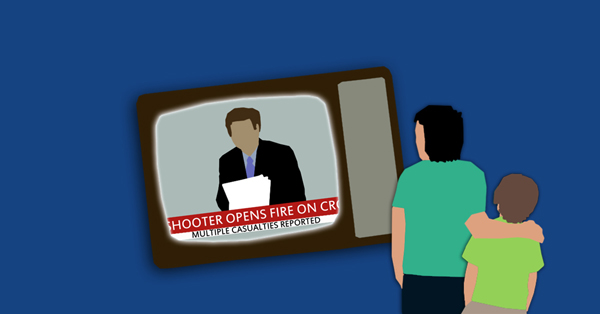
In the days following last month’s deadly attacks in Paris, photographs and video of bloodied victims crying and panicked were piped into television sets, shared online and printed on the front pages of newspapers around the globe.
A lighter moment, however, made it through the fray and went viral. It was a minute-and-a-half long video of a French father explaining to his son on a Paris street the meaning of the flowers and candles left for the victims. In front of a French television camera, the father explains to his adorable toddler son that no, they won’t have to move, as the son had thought. The father explained that there are bad guys everywhere, but there are many more good guys than bad and that the flowers and shared compassion would keep them safe.
It’s no surprise that millions were taken by the heartfelt conversation, including Steve Berkowitz, MD, director of the Penn Center for Youth and Family Trauma Response and Recovery, who said that the father was being a good dad in that moment, but also suggested that those who most benefited from the talk are the shaken adults who also personally needed comfort.
Explaining trauma to children can be a tricky thing, said Berkowitz, an expert who has counseled children and families in the wake of several tragedies during his career.
For children under six years old, the best course of action is to do just about everything possible to keep them from any coverage, he said. Children in that age range struggle with their sense of time and place, and that can lead them to believe the attack is happening over and over, each time they see coverage. They’re minds just aren’t ready to appropriately handle the simple facts of the narrative, he added.
However, if they do see and they have questions, it’s best to assure them that they are safe and the adults are handling it.
“That is exactly what kids need to hear,” Berkowitz said.
Kids a little older are more likely to learn about tragedies in the news and to have questions. Berkowitz said that’s fine, but as a parent, it’s important to make sure they don’t focus on the attacks. Even as a parent or guardian, it’s perfectly OK to admit that the situation is scary, but reassure them that the adults will handle the situation.
Berkowitz said that older teenagers are often more shaken by world events than their younger siblings for a couple of reasons. The first is because they are simply more aware. They better understand the news and are more connected to it. They also tend to have underlying anxiety and uncertainty about graduating high school and entering the adult world. A national or international tragedy can be one more stressor on a plate full of them.
However, one thing to keep in mind, Berkowitz said, is that young people today are somewhat accustomed to seeing these attacks, whether they are the mass shootings that consume our airwaves or the attacks with international implications. Whenever they occur, they regularly dominate our social media news feed and take over cable TV news.
The most important thing parents can do around their kids, teens or younger, is to keep calm and keep things in perspective, Berkowitz said. They should keep an eye on how they are reacting to the news. Even if they do feel the fear and anxiety after a major attack, which is normal, they should try to shield their young ones from those emotions.
“It’s normal to feel anxious and nervous after an attack, it’s understandable, but it’s inappropriate to share that with your kids,” Berkowitz said.
And try not to leave cable news on all day and avoid checking Twitter too much. That’s probably good advice for all of us.
“The news doesn’t change that fast,” he said.